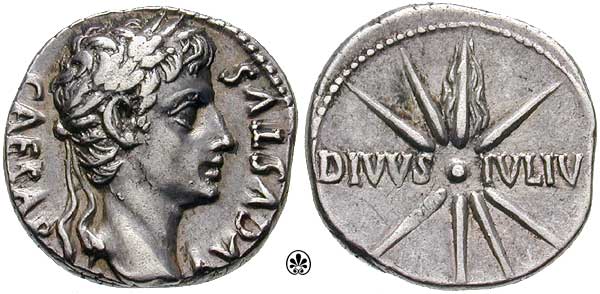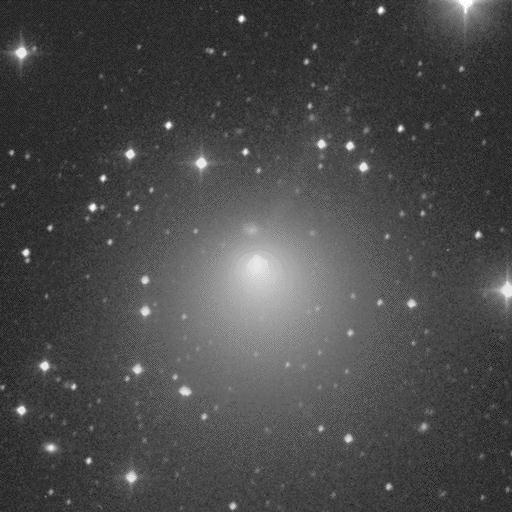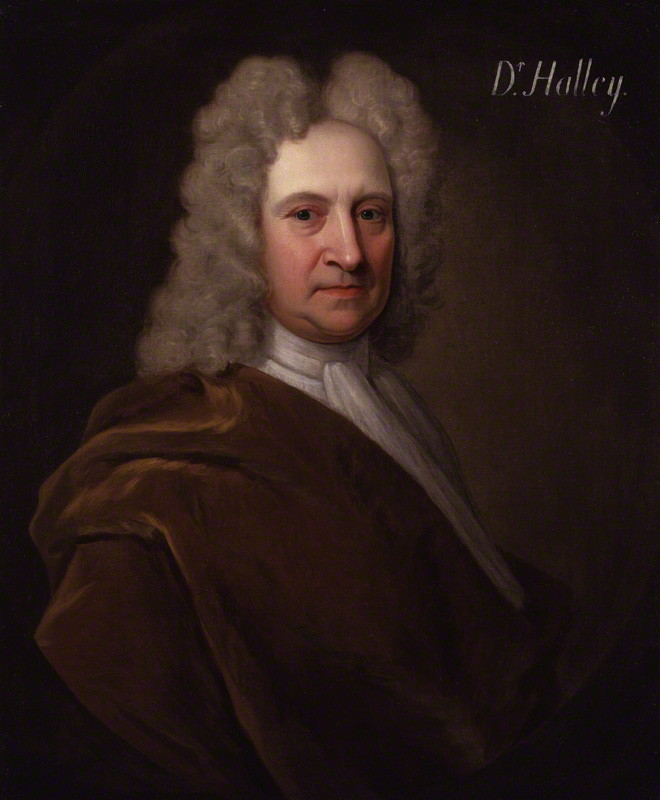|
Naming Of Comets
Comets have been observed for over 2,000 years. During that time, several different systems have been used to assign names to each comet, and as a result many comets have more than one name. The simplest system names comets after the year in which they were observed (e.g. the Great Comet of 1680). Later a convention arose of using the names of people associated with the discovery (e.g. Comet Hale–Bopp) or the first detailed study (e.g. Halley's Comet) of each comet. During the twentieth century, improvements in technology and dedicated searches led to a massive increase in the number of comet discoveries, which led to the creation of a numeric designation scheme. The original scheme assigned codes in the order that comets passed perihelion (e.g. Comet 1970 II). This scheme operated until 1994, when continued increases in the numbers of comets found each year resulted in the creation of a new scheme. This system, which is still in operation, assigns a code based on ... [...More Info...] [...Related Items...] OR: [Wikipedia] [Google] [Baidu] |
Caesar's Comet
Caesar's Comet (also ''Sidus Iulium'' ("Julian Star"); ''Caesaris astrum'' ("Star of Caesar"); Comet Caesar; the Great Comet of 44 BC; numerical designation C/−43 K1) was a seven-day cometary outburst seen in July 44 BC. It was interpreted by Romans as a sign of the deification of recently assassinated dictator, Julius Caesar (100–44 BC). Based on two questionable reports—one from China (May 30) and another from Rome (July 23)—an infinite number of orbit determinations can fit the observations, but a retrograde orbit is inferred based on available notes. The comet approached Earth both inbound in mid-May and outbound in early August. It came to perihelion (closest approach to the Sun) on May 25, −43 at a solar distance of about . At perihelion the comet had a solar elongation of 11 degrees and is hypothesized to have had an apparent magnitude of around −3 as the Chinese report is not consistent with daytime visibility during May.See Ramsepp. 122–23:(Comet abso ... [...More Info...] [...Related Items...] OR: [Wikipedia] [Google] [Baidu] |
Horace Parnell Tuttle
Horace Parnell Tuttle (March 17, 1837 – August 16, 1923) was an American astronomer, an American Civil War veteran and brother of astronomer Charles Wesley Tuttle (November 1, 1829 – July 17, 1881). Biography Early life H. P. Tuttle was born at Newfield, Maine. His parents were Moses Tuttle and Mary Merrow. In 1845 Mary Merrow died, and four years later Moses Tuttle remarried and moved to Cambridge, Massachusetts. Charles Wesley Tuttle was an amateur astronomer who constructed his own telescope, and on a visit to the Harvard Observatory so impressed William Cranch Bond that by 1850 he was hired as an assistant observer. At Harvard Charles Wesley first proposed the existence of the interior "dusky ring" of Saturn. In 1853 he discovered a comet (C/1853 E1 Secchi), with independent discovery credited to Angelo Secchi, Father Secchi, Rome. The following year Charles Wesley was forced to give up his astronomical career because of failing eyesight. He entered Harvard Law School and ... [...More Info...] [...Related Items...] OR: [Wikipedia] [Google] [Baidu] |
Lewis Swift
Lewis A. Swift (February 29, 1820 – January 5, 1913) was an American astronomer who discovered 13 comets and 1,248 previously uncatalogued nebulae. Only William Herschel discovered more nebulae visually. Discoveries Swift discovered or co-discovered a number of comets, including periodic comets 11P/Tempel-Swift-LINEAR, 64P/Swift-Gehrels, and 109P/Swift-Tuttle (parent body of the Perseids meteor shower). He also discovered comets C/1877 G2, C/1878 N1, C/1879 M1, C/1881 J1, C/1881 W1, C/1892 E1, D/1895 Q1 (also known as D/Swift, whose debris stream Mariner 4 probably encountered on September 15, 1967), C/1896 G1 and C/1899 E1, and co-discovered C/1883 D1 (Brooks-Swift). Note, however, comet 54P/de Vico-Swift-NEAT was discovered by his son Edward D. Swift rather than by him. He discovered his last comet at the age of 79. He was one of the few people to see Comet Halley at two of its appearances, 76 years apart (see also: External Link). In 1878 he believed he had observed two Vulc ... [...More Info...] [...Related Items...] OR: [Wikipedia] [Google] [Baidu] |
Comet Swift–Tuttle
Comet Swift–Tuttle (formally designated 109P/Swift–Tuttle) is a large periodic comet with a 1995 ( osculating) orbital period of 133 years that is in a 1:11 orbital resonance with Jupiter. It fits the classical definition of a Halley-type comet, which has an orbital period between 20 and 200 years. The comet was independently discovered by Lewis Swift on 16 July 1862 and by Horace Parnell Tuttle on 19 July 1862. Its nucleus is in diameter. Swift–Tuttle is the parent body of the Perseid meteor shower, perhaps the best known shower and among the most reliable in performance. The comet made a return appearance in 1992, when it was rediscovered by Japanese astronomer Tsuruhiko Kiuchi and became visible with binoculars. It was last observed in April 1995 when it was from the Sun. In 2126, it will be a bright naked-eye comet reaching an apparent magnitude of about 0.7. Historical observations Chinese records indicate that, in 188, the comet reached apparent magnitud ... [...More Info...] [...Related Items...] OR: [Wikipedia] [Google] [Baidu] |
En Dashes
The dash is a punctuation mark consisting of a long horizontal line. It is similar in appearance to the hyphen but is longer and sometimes higher from the baseline. The most common versions are the endash , generally longer than the hyphen but shorter than the minus sign; the emdash , longer than either the en dash or the minus sign; and the horizontalbar , whose length varies across typefaces but tends to be between those of the en and em dashes. Typical uses of dashes are to mark a break in a sentence, to set off an explanatory remark (similar to parenthesis), or to show spans of time or ranges of values. The em dash is sometimes used as a leading character to identify the source of a quoted text. History In the early 17th century, in Okes-printed plays of William Shakespeare, dashes are attested that indicate a thinking pause, interruption, mid-speech realization, or change of subject. The dashes are variously longer (as in ''King Lear'' reprinted 1619) or comp ... [...More Info...] [...Related Items...] OR: [Wikipedia] [Google] [Baidu] |
Hervé Faye
Hervé Auguste Étienne Albans Faye ( – ) was a French astronomer, born at Saint-Benoît-du-Sault (Indre) and educated at the École Polytechnique, which he left in 1834, before completing his course, to accept a position in the Paris Observatory to which he had been appointed on the recommendation of M. Arago. It was during his time at the École Polytechnique that he developed his interest in astronomy. He studied comets, and discovered the periodic comet 4P/Faye on 22 November 1843. His discovery of "Faye's Comet" attracted worldwide attention, and won him the 1844 Lalande Prize and a membership in the French Academy of Sciences. In 1848 he became an instructor in geodesy at the Polytechnique, and in 1854 rector of the academy at Nancy and professor of astronomy in the faculty of science there. Other promotions followed in succeeding decades. He became Minister of Public Instruction in the Rochebouet cabinet in 1877, a position which he held only briefly. Faye s ... [...More Info...] [...Related Items...] OR: [Wikipedia] [Google] [Baidu] |
Comet Faye
Comet 4P/Faye (also known as Faye's Comet or Comet Faye) is a periodic Jupiter-family comet discovered in November 1843 by Hervé Faye at the Royal Observatory in Paris. Its most recent perihelia (closest approaches to the Sun) were on November 15, 2006; May 29, 2014; and September 8, 2021. Observational history The comet was first observed by Faye on November 23, but bad weather prevented its confirmation until the 25th. It was so faint that it had already passed perihelion about a month before its discovery, and only a close pass by the Earth had made it bright enough for discovery. Otto Wilhelm von Struve reported that the comet was visible to the naked eye at the end of November. It remained visible for smaller telescopes until January 10, 1844, and was finally lost to larger telescopes on April 10, 1844. In 1844, Friedrich Wilhelm Argelander and Thomas James Henderson independently computed that the comet was a short-period comet; by May, its period had been calcula ... [...More Info...] [...Related Items...] OR: [Wikipedia] [Google] [Baidu] |
Biela's Comet
Biela's Comet or Comet Biela (official designation: 3D/Biela) was a periodic Jupiter-family comet first recorded in 1772 by Montaigne and Messier and finally identified as periodic in 1826 by Wilhelm von Biela. It was subsequently observed to split in two and has not been seen since 1852. As a result, it is currently considered to have been destroyed, although remnants have survived for some time as a meteor shower, the Andromedids which may show increased activity in 2023. Discovery The comet was first recorded on 8 March 1772 by Jacques Leibax Montaigne; during the same apparition it was independently discovered by Charles Messier. It was also recorded in 1805 by Jean-Louis Pons, but was not recognized as the same object. Around 9 December 1805 comet Biela passed about from Earth. After the 1805 apparition a number of attempts were made by Gauss (1806) and Bessel (1806) to calculate a definitive orbit. Gauss and Olbers both noted a similarity between the 1805 and 1772 ... [...More Info...] [...Related Items...] OR: [Wikipedia] [Google] [Baidu] |
Encke's Comet
Comet Encke , or Encke's Comet (official designation: 2P/Encke), is a periodic comet that completes an orbit of the Sun once every 3.3 years. (This is the shortest period of a reasonably bright comet; the faint main-belt comet 311P/PanSTARRS has a period of 3.2 years.) Encke was first recorded by Pierre Méchain on 17 January 1786, but it was not recognized as a periodic comet until 1819 when its orbit was computed by Johann Franz Encke. Like Halley's Comet, it is unusual in its being named after the calculator of its orbit rather than its discoverer. Like most comets, it has a very low albedo, reflecting only 4.6% of the light its nucleus receives, although comets generate a large coma and tail that can make them much more visible during their perihelion (closest approach to the Sun). The diameter of the nucleus of Encke's Comet is 4.8 km. Discovery As its official designation implies, Encke's Comet was the first periodic comet discovered after Halley's Comet (designate ... [...More Info...] [...Related Items...] OR: [Wikipedia] [Google] [Baidu] |
Edmond Halley
Edmond (or Edmund) Halley (; – ) was an English astronomer, mathematician and physicist. He was the second Astronomer Royal in Britain, succeeding John Flamsteed in 1720. From an observatory he constructed on Saint Helena in 1676–77, Halley catalogued the southern celestial hemisphere and recorded a transit of Mercury across the Sun. He realised that a similar transit of Venus could be used to determine the distances between Earth, Venus, and the Sun. Upon his return to England, he was made a fellow of the Royal Society, and with the help of King Charles II of England, Charles II, was granted a master's degree from University of Oxford, Oxford. Halley encouraged and helped fund the publication of Isaac Newton's influential ''Philosophiæ Naturalis Principia Mathematica'' (1687). From observations Halley made in September 1682, he used Newton's law of universal gravitation to compute the periodicity of Halley's Comet in his 1705 ''Synopsis of the Astronomy of Comets''. It ... [...More Info...] [...Related Items...] OR: [Wikipedia] [Google] [Baidu] |





